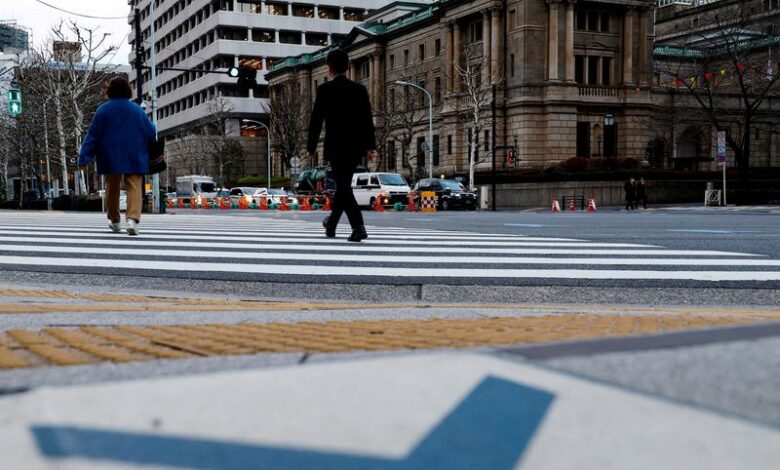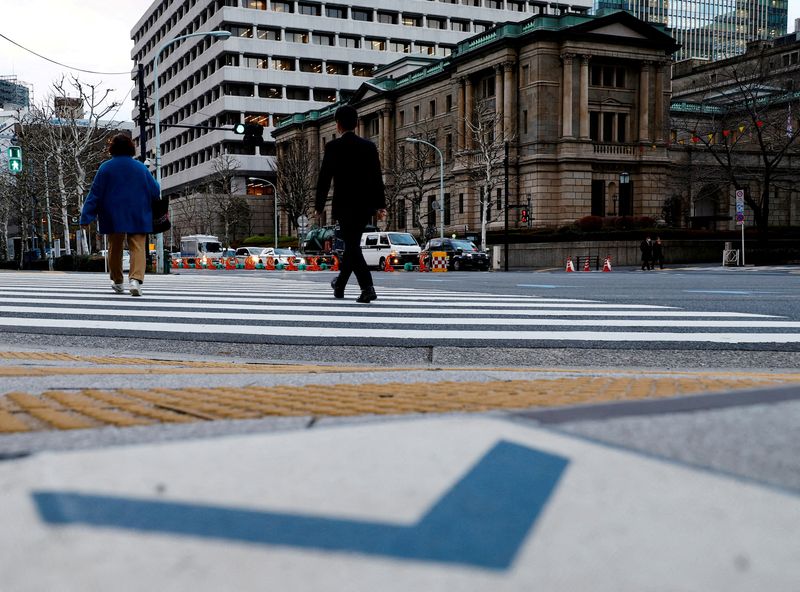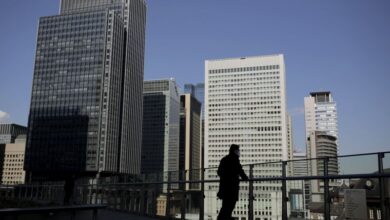Financial institution of Japan chief proposes ending unfavorable charges as board chair, NHK studies By Reuters

[ad_1]

© Reuters. FILE PHOTO: Folks stroll in entrance of the Financial institution of Japan constructing in Tokyo, Japan January 23, 2024. REUTERS/Kim Kyung-Hoon/File Photograph
By Leika Kihara
TOKYO (Reuters) – The Financial institution of Japan is anticipated to finish eight years of unfavorable rates of interest and different remnants of its unorthodox coverage on Tuesday, making a historic shift away from a spotlight of reflating development with many years of huge financial stimulus.
Whereas the transfer would mark Japan’s first rate of interest hike in 17 years, it will nonetheless preserve rates of interest caught round zero as a fragile financial restoration forces the central financial institution to go sluggish in any additional rise in borrowing prices, analysts say.
The transfer would make Japan the final central financial institution to ditch unfavorable charges and finish an period during which policymakers all over the world sought to prop up development by low cost cash and unconventional financial instruments.
Whereas a majority of economists polled earlier this month had anticipated the BOJ to attend till April for it to finish unfavorable charges, sources say bigger-than-expected pay hikes introduced by main corporations final week now heighten the possibility the financial institution will make that call at its two-day assembly ending on Tuesday.
If the nine-member board believes the situations are proper, the BOJ will set the in a single day name fee as its new goal and information it in a spread of 0-0.1% by paying 0.1% curiosity on extra reserves monetary establishments park with the central financial institution.
“What we count on general is a return to a way more easy coverage framework that focuses on concentrating on the entrance finish” of the yield curve, mentioned Izumi Devalier, head of Japan economics at BofA Securities.
“This could be the primary fee hike in 17 years, so it has a whole lot of symbolic significance. However the precise influence on the economic system may be very small,” she mentioned, noting the BOJ will probably keep its resolve to maintain financial situations ultra-loose.
Upon exiting its unfavorable fee coverage, the BOJ will even ditch its bond yield management and discontinue purchases of dangerous belongings resembling exchange-traded funds (ETF), sources have instructed Reuters, placing a proper finish to the unconventional financial experiment put in place by former Governor Haruhiko Kuroda since 2013.
There’s nonetheless an opportunity the BOJ would possibly wait till April if a majority within the board sees the necessity to scrutinise extra knowledge earlier than pulling the set off.
A ballot taken in March confirmed 35% of economists anticipated the BOJ to finish unfavorable charges on the two-day assembly ending on Tuesday, up from the earlier month’s 7% however nonetheless under 62% projecting such motion at its subsequent assembly on April 25-26.
With an finish to unfavorable charges seen as practically a completed deal, the market’s consideration is shifting to any clues the BOJ might give on the tempo of any rate of interest hikes thereafter.
The stakes are excessive. A spike in bond yields would increase the price of funding Japan’s big public debt which, at twice the dimensions of its economic system, is the biggest amongst superior economies.
An finish to the world’s final remaining supplier of low cost funds might additionally jolt international monetary markets as Japanese buyers, who amassed abroad investments looking for yields, shift a reimbursement to their residence nation.
Upon an exit from unfavorable charges, the BOJ is prone to reassure markets that such a transfer will not be a prelude to the type of aggressive fee hikes seen in america lately.
The brand new steering might come both within the assertion saying the coverage determination, or feedback from Governor Kazuo Ueda’s scheduled post-meeting information convention.
Underneath earlier Governor Kuroda, the BOJ deployed an enormous asset-buying programme in 2013, initially aimed toward firing up inflation to a 2% goal inside roughly two years.
The central financial institution launched unfavorable charges and yield curve management (YCC) in 2016 as tepid inflation pressured it to tweak its stimulus programme to a extra sustainable one.
Because the yen’s sharp falls pushed up the price of imports and heightened public criticism over the price of Japan’s ultra-low rates of interest, nonetheless, the BOJ final 12 months tweaked YCC to chill out its grip on long-term charges.
[ad_2]
Source link




